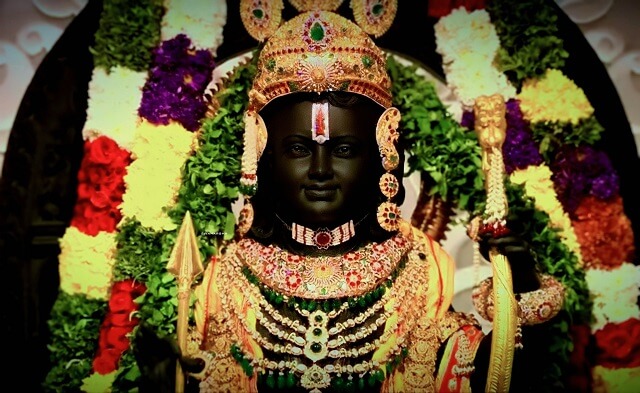Introduction : Ram Mandir
The much-awaited inauguration of the grand Ram Mandir in Ayodhya took place on January 22, 2024, with the ‘Pran Pratishtha’ ceremony being performed by Prime Minister Narendra Modi. The consecration marks a significant moment in India’s cultural and religious history, drawing attention not only from the nation but also from global audiences. The temple, which is constructed in the traditional Nagara style, is supported by a total of 392 pillars and has 44 doors. Its length (east-west) is 380 feet; width 250 feet and height 161 feet. The ‘Pran Pratishtha’ ceremony was attended by nearly 7,000 invitees, including politicians, industrialists, celebrities, and sports personalities. The temple will be opened to the public on January 23, 2024. The event was telecast live and was watched by millions of people around the world. The construction of the temple started after the Supreme Court, in a landmark judgment of 2019, awarded the disputed land for a temple and asked that Muslims be given an alternate plot for a mosque. The matter, which went to court shortly after Independence, had escalated after hundreds of Karsevaks razed a 16th Century mosque on the site, believing it was built over a temple marking the birthplace of Lord Ram. The opening of the Ram Mandir is expected to boost tourism in Ayodhya and bring in the long-awaited economic boom.
Historical Background : Ram Mandir
The Ayodhya dispute, one of the most contentious and prolonged issues in Indian history, revolved around the Babri Masjid, a mosque believed by some to have been built on the birthplace of Lord Ram. The dispute sparked tensions between Hindus and Muslims for many years, leading to the demolition of the mosque in 1992, which further intensified communal tensions.
After years of legal battles and negotiations, the Supreme Court of India, in November 2019, awarded the disputed land to the Hindu community while allocating an alternate site for the construction of a mosque. This historic judgment paved the way for the construction of the Ram Mandir in Ayodhya.
The Inauguration Ceremony : Ram Mandir
The Ayodhya Ram Mandir inauguration ceremony was a grand and spiritually charged event that captured the essence of India’s diverse cultural heritage. It brought together people of all walks of life, transcending barriers of religion, caste, and creed. The event was attended by political leaders, spiritual leaders, and millions of devotees, making it one of the largest gatherings in recent memory.
- The Bhoomi Pujan: The ceremony began with a traditional Bhoomi Pujan, the consecration of the land, performed by Prime Minister Narendra Modi. This auspicious ritual involved sanctifying the site with sacred water from various rivers and soil from significant pilgrimage sites across India.
- The Shilanyas: The foundation stone for the Ram-Mandir was laid by Prime Minister Modi using a 40 kg silver brick. This was a moment of great significance as it marked the formal beginning of the construction process.
- The Architecture: The Ram-Mandir is designed in the Nagara architectural style, reminiscent of ancient Indian temple architecture. It is set to be an architectural marvel with intricate carvings and exquisite artwork, celebrating the life and teachings of Lord Ram.
- Cultural Performances: The inauguration ceremony was adorned with cultural performances showcasing the rich cultural tapestry of India. Classical dance performances, devotional songs, and art exhibitions celebrated the essence of Lord Ram’s life.
- Religious Leaders: The ceremony saw the presence of spiritual leaders from various sects and beliefs, emphasizing the message of unity, peace, and harmony.
Significance and Symbolism
The Ayodhya Ram Mandir holds profound cultural and spiritual significance for millions of Hindus in India and around the world. Lord Ram is considered an embodiment of virtue, righteousness, and dharma (duty), and his temple in Ayodhya is a symbol of faith, devotion, and unity.
- Cultural Unity: The construction and inauguration of the Ram-Mandir symbolize the unity and strength of the Indian culture, bringing together people from diverse backgrounds under a common spiritual umbrella.
- Spiritual Revival: For many, the temple represents a spiritual revival, rekindling the connection to their ancient roots and offering a sacred space for worship and meditation.
- National Pride: The Ayodhya Ram-Mandir has become a matter of national pride, reflecting India’s cultural and historical heritage.
- Healing and Reconciliation: The peaceful resolution of the Ayodhya dispute and the construction of the Ram-Mandir have opened doors for healing and reconciliation between communities that were once divided.
Conclusion
The Ayodhya Ram Mandir inauguration ceremony stands as a testament to India’s commitment to its rich cultural and spiritual heritage. It represents the triumph of peace, justice, and unity over decades of strife and discord. The temple is a symbol of hope, a place where millions can seek solace, inspiration, and enlightenment. As India moves forward, it is essential to embrace this historic moment as an opportunity for healing, harmony, and inclusive progress. The Ayodhya Ram-Mandir stands tall as a beacon of cultural and spiritual resurgence, guiding the nation towards a brighter and more harmonious future.


